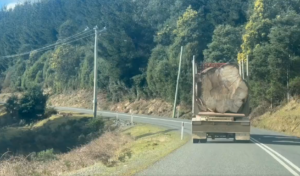The native forest and forest product industries contribute a miniscule amount to the Australian economy (in the order of 0.15% to 0.20% of GDP). Despite this, it has dominated the minds and energies of many politicians and environmental policy makers for decades. Among other things, it helped spark the emergence of the environmental movement in the 1960s and ’70s, defined a large part of the Hawke-Keating government’s environment agenda in the 1980s and 1990s, was central to the environmental achievements of the Carr, Beattie and Gallop state Labor governments in the late 1990s and early 2000s, and helped determine the outcome of the 2004 federal election. In recent times, it has stolen much of the limelight in Tasmania as the Gillard and Giddings governments have tried — in collaboration with industry and green group representatives — to nut out a deal to refloat the industry. Much of the public debate around these negotiations has centred on the 500,000 hectares of proposed new reserves that are being offered in exchange for additional federal government funds. While important, of potential greater long-term significance are the policy concessions the industry is quietly seeking from government behind closed doors. What happens in these discussions will shape the forestry debate, and the native forest industry, for at least the next decade.
Related documents
Between the Lines Newsletter
The biggest stories and the best analysis from the team at the Australia Institute, delivered to your inbox every fortnight.
You might also like
Native Forest Logging in Tasmania: The Facts
Tasmania’s native forests are globally recognised for their unique species and conservation value, as well as being some of the most carbon dense forests on the planet.
The Intergenerational Report shows a massive shift towards supporting wealthier individuals’ retirements
Jim Chalmers suggests the superannuation system is the intergenerational “genius” but it really means providing more support for wealthier people who do not need it.
Big names unite to protect Tasmania’s forests
Federal MPs, an Olympic champion and acclaimed authors are among dozens of high-profile names urging the Tasmanian government to end to native forest logging.


